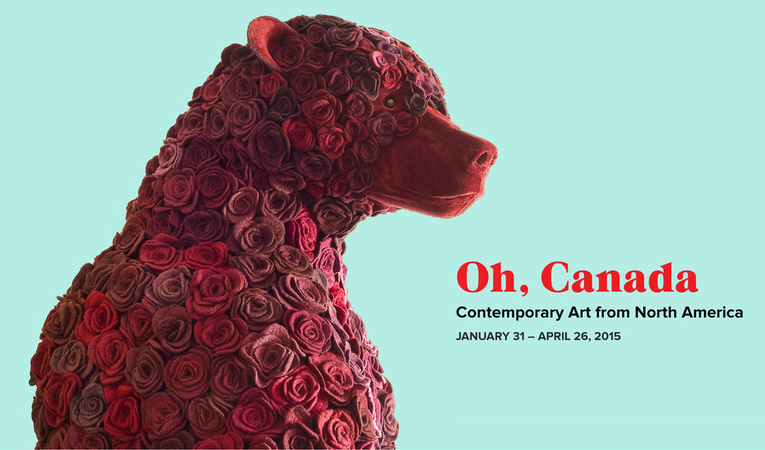Congenitally opposed to the macho tone of so many avant-garde polemics, suspicion of the manifesto comes naturally to feminism. And yet, as the credibility of the manifesto declined over the past 40 years, feminist skepticism informed numerous landmark appropriations of the genre: Valerie Solanas’ “SCUM Manifesto (1968), Mierle Laderman Ukeles’ “Manifesto for Maintenance Art” (1969) and Donna Haraway’s “A Cyborg Manifesto: Science, Technology and Socialist-Feminism in the Late Twentieth Century” (1991), as well as two manifestos that Haraway inspired–VNS Matrix’s “Cyberfeminist Manifesto for the Twenty-First Century” (1991) and Sandy Stone’s “The ‘Empire’ Strikes Back: A Posttranssexual Manifesto” (1991). While Solanas’ rhetorical attack on male existence ‘was as earnest as her physical attack on
Andy Warhol, these other polemicists take a more self-deprecating stance. Mixing irony and passion, they channel the manifesto’s power while questioning its revolutionary certainty.

Allison Smith is one of several contemporary artists to harness the manifesto’s symbolism. In 2005 Smith organized “The Muster,” a weekend-long encampment on ‘Governor’s Island, New York, based on American Civil War re-enactments and with the mood of a county fair. Responding to Smith’s entreaty “What are you fighting for?” with homemade outfits and banners, participants demonstrated for “Universal Aesthetic Suffrage,” “Improved Communication,” “Inner Peace in a Warring Nation,” “Women and Madness” and more. Smith has written for LTTR, the
art journal published by the youthful Brooklyn-based artist/ activist collective. Like Smith, LTTR is interested in stimulating and problematizing public speech, keeping speaker and addressee fluid. For a group Whose very name eludes definition, standing for Lesbians to the Rescue, Listen Translate Translate Record, Listen to the Radio or whatever its members want it to mean, identity and identification are in constant flux:

“LeTTer. sprinkled into this text we find many opportunities to imagine ourselves. LITTER. many moments to perform our symptoms for each other and create the space to question our development as artists workers and thinkers, we’re here to reconstitute a new team under an old threat, to embrace our historical birth into feminist sexes and to move With the brilliant bodies languages identities and arts that this long walk has produced, but this lesbian we speak of, I find him as ambiguous in nature as in verse. I find her over and again.”
This provocative text draws energy from radical feminism, queer theory, trans activism and beyond. Moreover, by suggesting that we acquire sexual identity at the moment we enter language, it evokes the crucial feminist debate about the difficulty of defining feminist practice with the tools, and within the terms, of patriarchal discourse.
 Allison Smith is one of several contemporary artists to harness the manifesto’s symbolism. In 2005 Smith organized “The Muster,” a weekend-long encampment on ‘Governor’s Island, New York, based on American Civil War re-enactments and with the mood of a county fair. Responding to Smith’s entreaty “What are you fighting for?” with homemade outfits and banners, participants demonstrated for “Universal Aesthetic Suffrage,” “Improved Communication,” “Inner Peace in a Warring Nation,” “Women and Madness” and more. Smith has written for LTTR, the art journal published by the youthful Brooklyn-based artist/ activist collective. Like Smith, LTTR is interested in stimulating and problematizing public speech, keeping speaker and addressee fluid. For a group Whose very name eludes definition, standing for Lesbians to the Rescue, Listen Translate Translate Record, Listen to the Radio or whatever its members want it to mean, identity and identification are in constant flux:
Allison Smith is one of several contemporary artists to harness the manifesto’s symbolism. In 2005 Smith organized “The Muster,” a weekend-long encampment on ‘Governor’s Island, New York, based on American Civil War re-enactments and with the mood of a county fair. Responding to Smith’s entreaty “What are you fighting for?” with homemade outfits and banners, participants demonstrated for “Universal Aesthetic Suffrage,” “Improved Communication,” “Inner Peace in a Warring Nation,” “Women and Madness” and more. Smith has written for LTTR, the art journal published by the youthful Brooklyn-based artist/ activist collective. Like Smith, LTTR is interested in stimulating and problematizing public speech, keeping speaker and addressee fluid. For a group Whose very name eludes definition, standing for Lesbians to the Rescue, Listen Translate Translate Record, Listen to the Radio or whatever its members want it to mean, identity and identification are in constant flux:
 “LeTTer. sprinkled into this text we find many opportunities to imagine ourselves. LITTER. many moments to perform our symptoms for each other and create the space to question our development as artists workers and thinkers, we’re here to reconstitute a new team under an old threat, to embrace our historical birth into feminist sexes and to move With the brilliant bodies languages identities and arts that this long walk has produced, but this lesbian we speak of, I find him as ambiguous in nature as in verse. I find her over and again.”
This provocative text draws energy from radical feminism, queer theory, trans activism and beyond. Moreover, by suggesting that we acquire sexual identity at the moment we enter language, it evokes the crucial feminist debate about the difficulty of defining feminist practice with the tools, and within the terms, of patriarchal discourse.
“LeTTer. sprinkled into this text we find many opportunities to imagine ourselves. LITTER. many moments to perform our symptoms for each other and create the space to question our development as artists workers and thinkers, we’re here to reconstitute a new team under an old threat, to embrace our historical birth into feminist sexes and to move With the brilliant bodies languages identities and arts that this long walk has produced, but this lesbian we speak of, I find him as ambiguous in nature as in verse. I find her over and again.”
This provocative text draws energy from radical feminism, queer theory, trans activism and beyond. Moreover, by suggesting that we acquire sexual identity at the moment we enter language, it evokes the crucial feminist debate about the difficulty of defining feminist practice with the tools, and within the terms, of patriarchal discourse. 